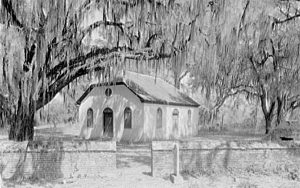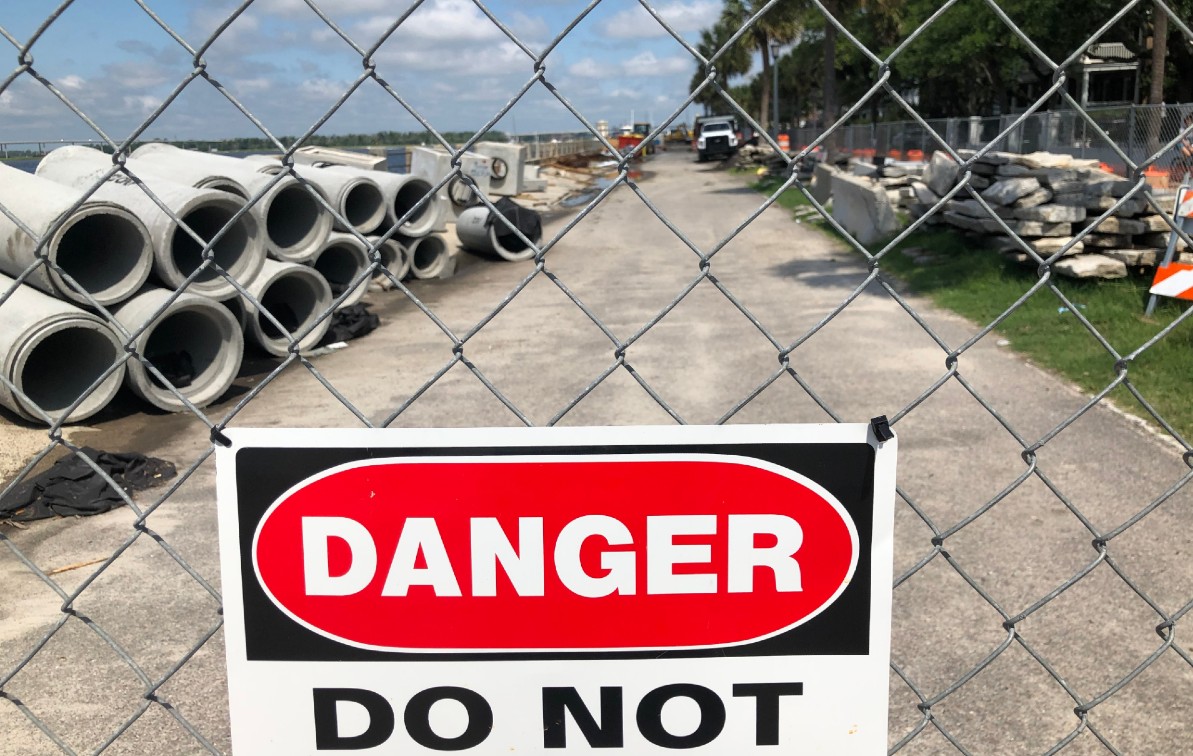Got any idea where these pipes and building materials are? Send your best guess to editor@charlestoncurrents.com. And don’t forget to include your name and the town in which you live.
 Our most recent mystery, “Another old picture of an old building,” shows historic Strawberry Chapel in Berkeley County along the Cooper River.
Our most recent mystery, “Another old picture of an old building,” shows historic Strawberry Chapel in Berkeley County along the Cooper River.
Congratulations to these sharp readers who correctly guessed: Anne Lawrence and Delia A. Smith, both of Charleston; Marnie Huger of Richmond, Va.; Chris Brooks and Steve Skardon, both of Mount Pleasant; Naomi Blumenthal of Greenwood Lake, N.Y.; Allan Peel of San Antonio, Texas; George Graf of Palmyra, Va.; Bill Segars of Hartsvlle; and Jay Altman of Columbia.
Several readers provided great context about the chapel, but Huger, who grew up in Charleston, offered a plethora of information:
“It was built as a chapel of ease in 1725 as part of the St. John’s Berkeley Parish. Located in present-day Cordesville, it was established as a mission church to the main parish church, Biggin Church. It is significant because it is the only remaining structure from the 1707 Childsbury settlement. Childsbury was one of the first towns laid out by Englishmen arriving in the Carolina colony. James Child helped design the settlement and also established a Cooper River ferry. Child was an English setter who was granted a tract of 1,200 acres on Strawberry Bluff overlooking the Cooper River in what is today Berkeley County. Upon his death, he bequeathed 500 acres of his land holdings for a town to be built.
“Strawberry Chapel is also known for the legend of 7-year-old Catherine Chicken, great daughter of James Child. She was tightly tied to a gravestone at Strawberry Chapel by her French schoolmaster as punishment for wandering around outside instead of doing her chores. He left her there, where she was discovered during the night. She survived and went on to marry Benjamin Simons III.
“Strawberry Chapel is also known for having its silver chalices, tankard, paten and offertory plates buried in a mahogany chest in February of 1865 by Keating Ball to hide it from Union General Sherman’s raiders who were expected to invade the area. He forgot where he buried it, and in 1946 the silver was found under the rice barn on nearby Comingtee Plantation.”
- Send us a mystery: If you have a photo that you believe will stump readers, send it along (but make sure to tell us what it is because it may stump us too!) Send it along to editor@charlestoncurrents.com.




 We Can Do Better, South Carolina!
We Can Do Better, South Carolina!
























